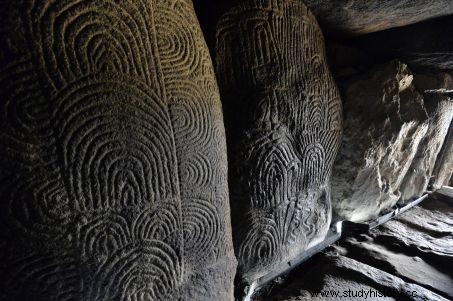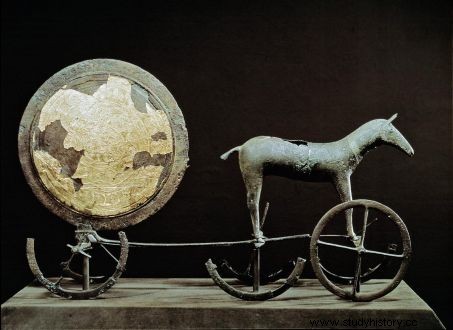In his new book "The forgotten ten millennia that made history", archaeologist Jean-Paul Demoule looks back on the Neolithic, a period of which he is a specialist.

Jean-Paul Demoule, archaeologist, professor emeritus at the University of Paris-1 Panthéon-Sorbonne, president of the National Institute for Preventive Archaeological Research (Inrap) from 2002 to 2008.
Sciences et Avenir:in your new book “The forgotten ten millennia that made history. When we invented agriculture, war and chiefs”, you mention “10,000 years zapped, which are not talked about and which are not taught as they should be”… What do you mean?
Jean-Paul Demoule: The Neolithic is a period that is not covered in school textbooks, which generally start from the great civilizations (Mesopotamia, Egypt etc.). It seems to me that there is no desire to ask questions about their emergence and that of the State. But these are fundamental questions:the invention of agriculture is the emergence of power and hierarchical societies, just as much as the question of the domestication of animals and plants.
Agriculture and animal husbandry have transformed the lives of men. What do you think the "Neolithic Revolution" mainly led to?
Between 10,000 and 5,000 BC, in different parts of the world and independently, small groups of hunter-gatherers began to domesticate animals and cultivate plants. Agriculture and livestock breeding then led to a major transformation, sedentary lifestyle. The food being secure, the men no longer move. The result was an immediate population boom. The hunter-gatherers had a child every 3 or 4 years, the women farmers will have one every year. It is estimated that around 10,000 years before our era, there were a few hundred thousand hunter-gatherers all over the globe. Today, we have grown to 7-8 billion, 9.8 billion by 2050, including one billion who do not have enough to eat and the other who are overweight. The essential transformation of the Neolithic is therefore demography, from which everything will then flow. There would have been neither industrial revolution nor digital revolution without Neolithic revolution.
Social inequalities, leaders, war, gods... would date from this period. Why ?
With the growth of the population came social hierarchy and inequalities, an increase in violence internal and external to the group, diseases - in contact with animals - and epidemics. With the first cities, the places where these inequalities emerged are Egypt and Mesopotamia. In Europe, they will arise around 4500 BC. J.-C, from the moment when men reach the Atlantic coast and the whole continent is populated.

The megalithic tomb of Gavrinis (3500 BC) in the Gulf of Morbihan. © Miguel Medina/AFP
How were these leaders born?
It is in the Neolithic that we see the appearance of characters who confiscate power by practicing what could be called a "manipulation of the imagination". Two conditions were needed for this:a sufficiently large group, and the force of conviction of some to persuade their congeners that they deserved to lead them and therefore to have more advantages than the others. This will result, for example, in the construction of imposing and rich megalithic tombs for a single deceased, unlike the simple burials of the rest of the population.
What about the war?
Concerning the European Neolithic, territorial tensions are felt in several ways once the populations have reached the Atlantic and can therefore go no further. It was at this time, around 4500 BC. J.-C, that the villages previously opened and established in the plains - in other words in favorable zones for natural resources - begin to migrate on the heights by surrounding themselves with ramparts, ditches, palisades etc . There are now riches and a territory to protect. At the same time, archaeologists note that the traces of wounds increase on the bodies found and that the massacres multiply. In the Copper Age, daggers were made from a material that was still quite soft. Everything changes when men were able to produce bronze by adding 10% tin, much more resistant. The first items thus crafted will be...swords! It's the gears:invention of breastplate, helmet, etc. The arms race begins! Expensive weapons reserved for the elite. It was also at this time that human representations, hitherto devoted only to female figures, like the Venuses of the Paleolithic, will switch to representations of warriors, men in arms.

Dating back to the 1st Bronze Age, the Trundholm sun chariot, discovered in 1902 near Nykøbing, Denmark. ©Leemage/AFP
What about the gods?
In Europe as in the Middle East, everything changed in nature with the emergence of chiefs represented as warriors. Male divinity and a hierarchical cosmos begin to dominate. In Europe, there will be representations of weapons, chariots, horses, chiefs... and that of the sun. So many elements that had never been represented before. The organization of a hierarchical religion with a pantheon and a "chief of the gods" takes place at this time.
You say that history was written by the rulers (kings, empires), and that several histories are possible. Which one would you like to write?
Difficult to write the history of the dominated, because it is always the dominant who are staged or who speak! I would like to write the history of the mechanisms of resistance to these oppressive phenomena, because there have been setbacks. These powers steadily crumble:the megaliths and their individual tombs with magnificent jades and all related marks of power disappeared after five centuries. The burials then became collective:hundreds of bodies piled up in graves without any object. Then again, princely residences reappeared in the first Iron Age, with gigantic palaces. I would like to describe in detail the mechanisms of these collapses, often attributed to wars.
Finally, was man right to invent agriculture?
For Israeli historian Yuval Noah Harari, author of the best-selling Sapiens:A Brief History of Humankind, the Neolithic is the source of all our ills… Same for the American anthropologist Marshall Salhins! I am more moderate. It depends on how you see humanity. Everyone forgets that we have in our Western societies a level of abundance that no one could claim under Louis XIV or Napoleon! And which is undoubtedly much lower than what humanity will be – if it still exists – in 10,000 years!
“ The ten forgotten millennia that made history. When we invented agriculture, war and chiefs ”, by Jean-Paul Demoule, Fayard editions, 318p., €20.90. Previous book:"We found the history of France », Robert Laffont, 2012, 336p, 21€
